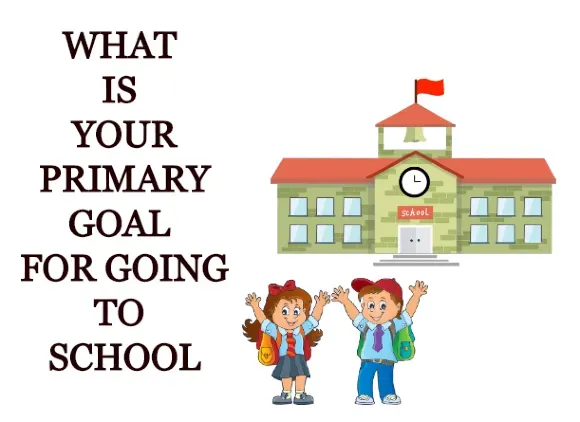What is your primary goal for going to school
Today I want to talk about 3 things, the primary goal for going to school or high school, which I consider the primary goal and two terms I want to introduce you to: "Ideal Scene" and "current scene" and that is, in particular, take away for yourself, that you can apply in your area. Good, with that,
let's talk about the primary goal in education. I think the primary goal in education in primary school up to the age of 10, should be this: to create life-long learners. That is the primary goal and the ideal scene with that would be this: I would consider it an ideal scene if the student could attest with certainty and feel completely confident that he could the following things:
1) that he knew he was a life long learner, 2) he knew when he encounters a learning problem and can remove the learning problem; he knows exactly what to do. 3) that he knows when his learning aptitude is going down what to do about it, and that he constantly increases his learning aptitude. He also knows that this can be attained.
Further, in the third point, I would consider he should have complete certainty of the fact if he can't do something, that he knows how and what causes that and how to resolve that. Cause that is all part learning because learning that doesn't produce anything doing is for most of us pretty useless.
you got to drive a car, make a cup of coffee, you may want to cook or you want to do marketing, you got to be able to do these things. There are very few of us, you can get away with just being able to talk nicely and people love it. But the point is they got to be able to do things, and people know if somebody can do that as opposed to someone who can just do the talk.
Now, this is the ideal scene. Let's have a look at the current scene in education: Well the current scene in education is this: which is trying to find the life-long learners by simply putting lots of information onto our kids and see which ones can memorise the information and throw it back out.
Now let's compare the two, ideal scene creating lifelong learners and current scene, finding life-long learners. What's the difference? It is in the word FIND, our current system doesn't create lifelong learners it doesn't even know what causes learning barriers, doesn't know how to resolve the learning barriers, but it knows how to find life long learning, by simply throwing lots of information at them, and the ones that can memorise it and spit it back out, they are winners
but it still doesn't teach those winners, and successes, of what causes these learning barriers. It doesn't teach if you can't do something, how you can figure out what the problem is and resolve it. that it doesn't tell you because it doesn't know.
So, I hope this helped you because know you know life long learning is not a product. I know how to create life long learning and I know the barriers, and what causes the problem is the ability to do things and how to increase learning aptitudes and duplication in particular.
For yourself, you can take away, apart from that. Have a look at your desk or job what is the ideal scene, how should it really be, or your business. and then write down what's really there and then compare the different bits. The ones that are not matching, you target for improvement.
Also read:- Why is physical education important essay
Also read:- Argumentative essay on early childhood education
Also read:- Essay on changes in education system my views
Thank you so much!!

Comments
Post a Comment